
Suffering From a Herniated disc? 3 Exercises for Effective Pain Relief
You’re likely here because you’ve been diagnosed with a herniated disc and want safe, practical exercises to help you recover more quickly. I see this condition often, and when a patient comes to me with a disc herniation, this is the approach I take.
*Disclaimer: This blog is for educational purposes only and should not replace medical advice from your healthcare provider. Please consult your primary care physician or physical therapist to confirm that these exercises are safe and appropriate for you.
A Simple Explanation Of A Herniated Disc
A herniated disc occurs when one of the discs between your vertebrae is damaged, either from natural aging or from movements like bending, lifting, or twisting. Pain often develops when the inner gel-like material pushes out and irritates or presses on a nearby nerve.
If you are unsure if your pain is coming from a disc herniation, check out this FREE Quiz! It will help you figure that out and what to do about it!

Most Common Symptoms That Accompany Herniated Discs
It’s important to know that not everyone with a herniated disc experiences symptoms, even if an MRI shows one. However, when symptoms do occur, they may include:
- Radiating nerve pain into the leg
- Sharp, shooting, or burning pain that follows the path of the affected nerve
- Numbness or tingling in the limb
- Muscle weakness
- Changes in the Achilles reflex
3 Exercises for a Herniated Disc
Thousands of people have found relief using these exercises, which take a different approach than the typical knee-to-chest, cat-camel, or prone press-up routines. Below are the movements I recommend. For a complete step-by-step plan to address disc issues, check out my book, Revision Sciatica.
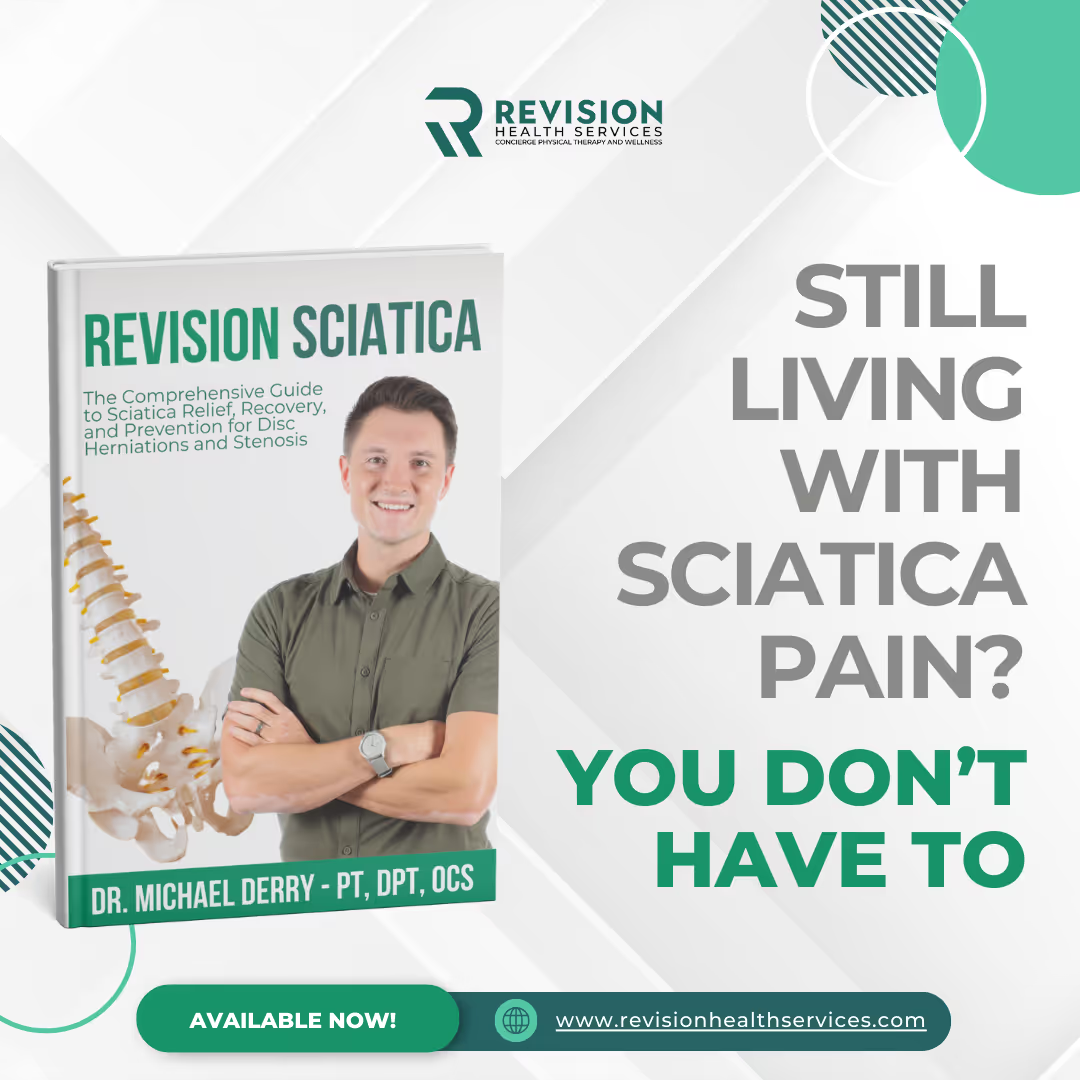
Downward Dog with Foot Pedal
Start in Downward Dog with your hands shoulder-width apart and feet hip-width apart. Press your hips up and back to form an inverted “V,” keeping your spine long and your chest reaching toward your thighs. From here, begin to pedal the feet by bending one knee while pressing the opposite heel down toward the floor. Switch sides slowly, as if you’re walking in place, and continue alternating to stretch one calf and hamstring at a time.


Leg Swings
Stand tall with one hand holding onto a wall, chair, or railing for support. Keep your core engaged and shoulders relaxed. Begin by swinging one leg forward and backward in a controlled motion, letting the movement come from your hip joint. Start with smaller swings and gradually increase the range of motion as your muscles warm up.
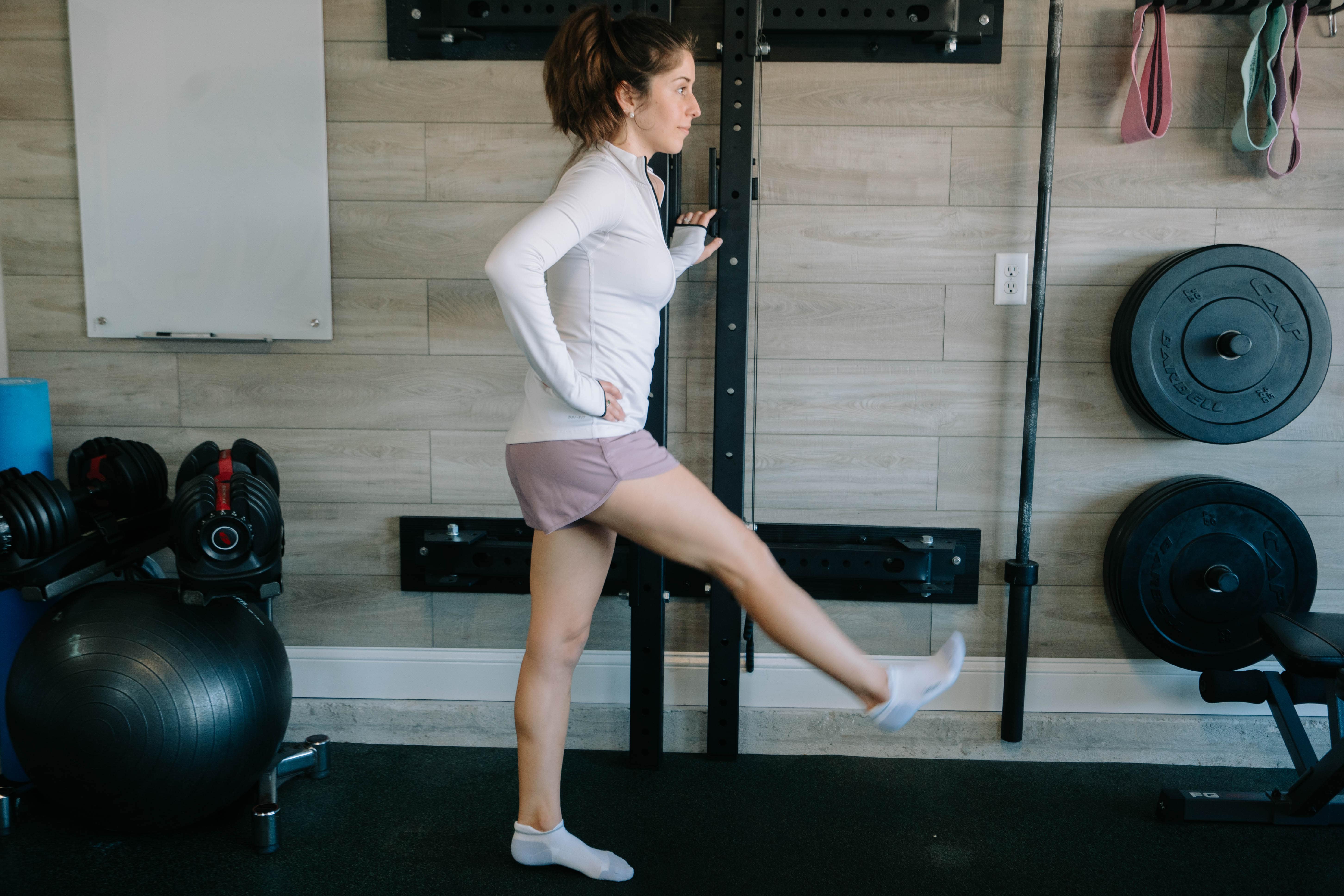

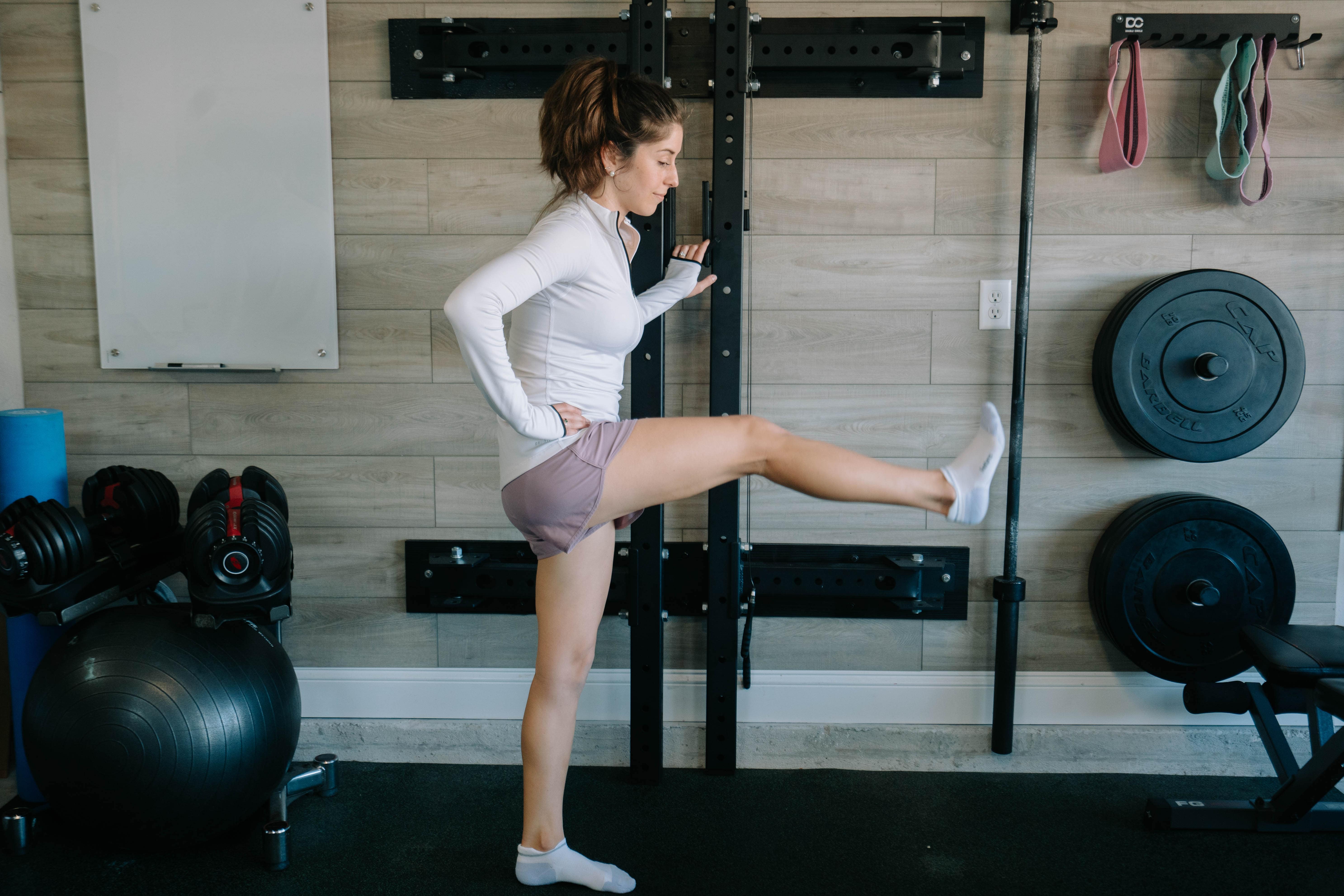
Prayer to Press
Begin in a kneeling position and sit your hips back toward your heels as you reach your arms forward on the floor, lowering your chest into a gentle stretch. This is the prayer position. From here, shift forward into a press by bringing your chest slightly up and forward while keeping your hands on the ground, opening through your spine and shoulders. Move slowly between the prayer stretch and the press, focusing on lengthening the back and releasing tension with each breath.

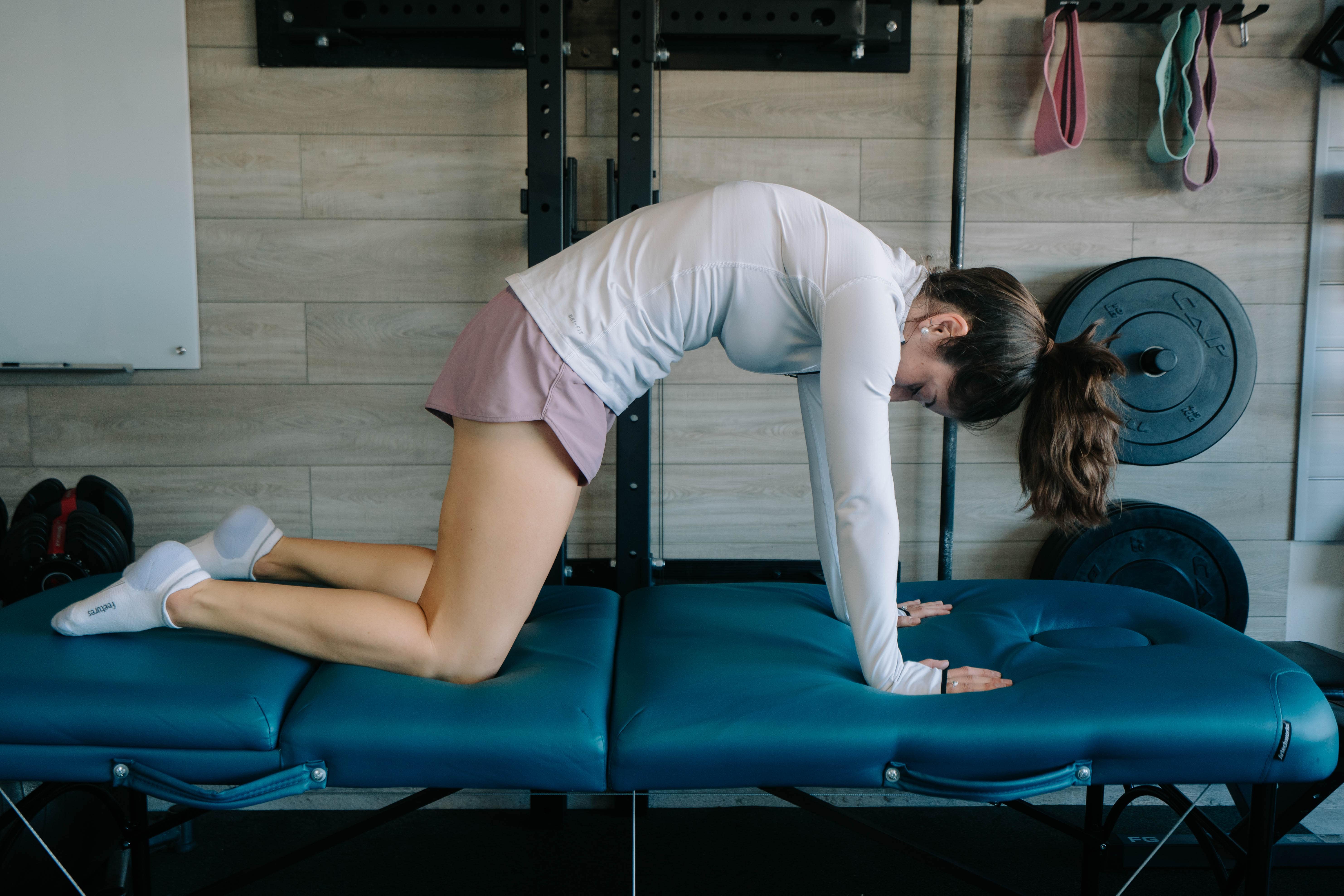
If you’re looking for a sciatica-friendly workout designed for those with a little extra cushion, this PDF is for you.
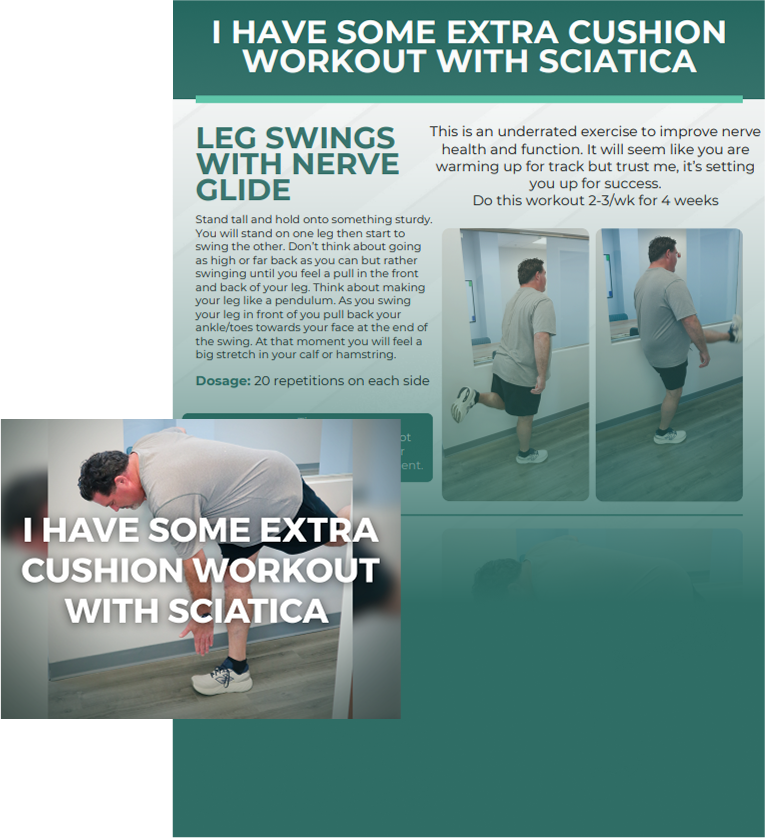
For Disc Issues, Please Remember These Facts:
- Disc herniations are very common in those with and without symptoms. That means you can get 100% better even if you have a disc herniation on an MRI.
- Moving is very good, but the proper movement at the right time makes all the difference.
- Be patient and know that the future will be better. It can be easy to get stuck in the trenches. Take a breath and move forward knowing that brighter days are ahead.
Frequently Asked Questions
Can I Exercise if I Have a Herniated Disc?
Yes! Exercise is a safe and effective treatment for people with herniated discs. In fact, research shows it can be just as effective as surgery—though it does require time and consistent effort. My role is to guide patients through this process, helping them stay on track and reach recovery. It’s not always easy, but the long-term results are absolutely worth it.
Can You Heal A Herniated Disc?
Absolutely! Zhong et al. (2017) found this in their meta-analysis, reporting that 66% of herniated lumbar discs were found to spontaneously resorb themselves, meaning that the body reabsorbed the herniated disc material.
Is a Disc Herniation in Your Neck the Same Thing as in Your Back?
Yes, the only thing different between a disc herniation in your neck and in your back will be the location where you feel the pain, with a herniation in the neck producing symptoms in one or both arms, and a herniation in the lower back producing symptoms in one or both legs.
About the Author
Dr. Michael Derry, PT, DPT - Licensed Doctor of Physical Therapy with 10+ years treating lower back and hip pain in Jacksonville, FL. Specializes in non-surgical treatment approaches and has helped thousands of patients move and feel better. Dr Derry just released a new book, Revision Sciatica, which is an incredible resource for improving Sciatica pain.
Summary
A herniated disc occurs when the cushioning between vertebrae presses on nearby nerves, often causing pain, numbness, or tingling in the leg. While many generic exercise programs can exacerbate symptoms, targeted movements like Downward Dog with Foot Pedal, Leg Swings, and Prayer to Press can safely reduce pain, improve mobility, and support healing. With the right approach and patience, disc herniations often improve without surgery, and movement becomes a powerful tool for long-term recovery.
You’re likely here because you’ve been diagnosed with a herniated disc and want safe, practical exercises to help you recover more quickly. I see this condition often, and when a patient comes to me with a disc herniation, this is the approach I take.
*Disclaimer: This blog is for educational purposes only and should not replace medical advice from your healthcare provider. Please consult your primary care physician or physical therapist to confirm that these exercises are safe and appropriate for you.
A Simple Explanation Of A Herniated Disc
A herniated disc occurs when one of the discs between your vertebrae is damaged, either from natural aging or from movements like bending, lifting, or twisting. Pain often develops when the inner gel-like material pushes out and irritates or presses on a nearby nerve.
If you are unsure if your pain is coming from a disc herniation, check out this FREE Quiz! It will help you figure that out and what to do about it!

Most Common Symptoms That Accompany Herniated Discs
It’s important to know that not everyone with a herniated disc experiences symptoms, even if an MRI shows one. However, when symptoms do occur, they may include:
- Radiating nerve pain into the leg
- Sharp, shooting, or burning pain that follows the path of the affected nerve
- Numbness or tingling in the limb
- Muscle weakness
- Changes in the Achilles reflex
3 Exercises for a Herniated Disc
Thousands of people have found relief using these exercises, which take a different approach than the typical knee-to-chest, cat-camel, or prone press-up routines. Below are the movements I recommend. For a complete step-by-step plan to address disc issues, check out my book, Revision Sciatica.

Downward Dog with Foot Pedal
Start in Downward Dog with your hands shoulder-width apart and feet hip-width apart. Press your hips up and back to form an inverted “V,” keeping your spine long and your chest reaching toward your thighs. From here, begin to pedal the feet by bending one knee while pressing the opposite heel down toward the floor. Switch sides slowly, as if you’re walking in place, and continue alternating to stretch one calf and hamstring at a time.


Leg Swings
Stand tall with one hand holding onto a wall, chair, or railing for support. Keep your core engaged and shoulders relaxed. Begin by swinging one leg forward and backward in a controlled motion, letting the movement come from your hip joint. Start with smaller swings and gradually increase the range of motion as your muscles warm up.



Prayer to Press
Begin in a kneeling position and sit your hips back toward your heels as you reach your arms forward on the floor, lowering your chest into a gentle stretch. This is the prayer position. From here, shift forward into a press by bringing your chest slightly up and forward while keeping your hands on the ground, opening through your spine and shoulders. Move slowly between the prayer stretch and the press, focusing on lengthening the back and releasing tension with each breath.


If you’re looking for a sciatica-friendly workout designed for those with a little extra cushion, this PDF is for you.

For Disc Issues, Please Remember These Facts:
- Disc herniations are very common in those with and without symptoms. That means you can get 100% better even if you have a disc herniation on an MRI.
- Moving is very good, but the proper movement at the right time makes all the difference.
- Be patient and know that the future will be better. It can be easy to get stuck in the trenches. Take a breath and move forward knowing that brighter days are ahead.
Frequently Asked Questions
Can I Exercise if I Have a Herniated Disc?
Yes! Exercise is a safe and effective treatment for people with herniated discs. In fact, research shows it can be just as effective as surgery—though it does require time and consistent effort. My role is to guide patients through this process, helping them stay on track and reach recovery. It’s not always easy, but the long-term results are absolutely worth it.
Can You Heal A Herniated Disc?
Absolutely! Zhong et al. (2017) found this in their meta-analysis, reporting that 66% of herniated lumbar discs were found to spontaneously resorb themselves, meaning that the body reabsorbed the herniated disc material.
Is a Disc Herniation in Your Neck the Same Thing as in Your Back?
Yes, the only thing different between a disc herniation in your neck and in your back will be the location where you feel the pain, with a herniation in the neck producing symptoms in one or both arms, and a herniation in the lower back producing symptoms in one or both legs.
About the Author
Dr. Michael Derry, PT, DPT - Licensed Doctor of Physical Therapy with 10+ years treating lower back and hip pain in Jacksonville, FL. Specializes in non-surgical treatment approaches and has helped thousands of patients move and feel better. Dr Derry just released a new book, Revision Sciatica, which is an incredible resource for improving Sciatica pain.
Summary
A herniated disc occurs when the cushioning between vertebrae presses on nearby nerves, often causing pain, numbness, or tingling in the leg. While many generic exercise programs can exacerbate symptoms, targeted movements like Downward Dog with Foot Pedal, Leg Swings, and Prayer to Press can safely reduce pain, improve mobility, and support healing. With the right approach and patience, disc herniations often improve without surgery, and movement becomes a powerful tool for long-term recovery.
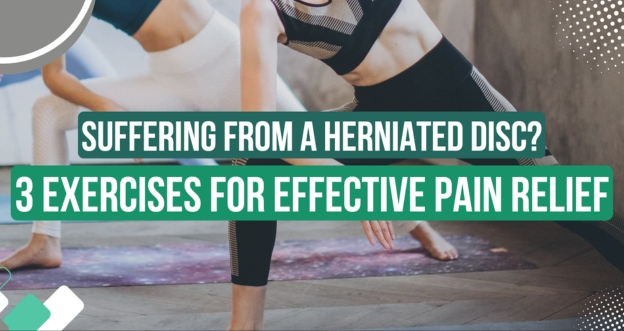



%20Blog%20thumbnails%204.avif)
